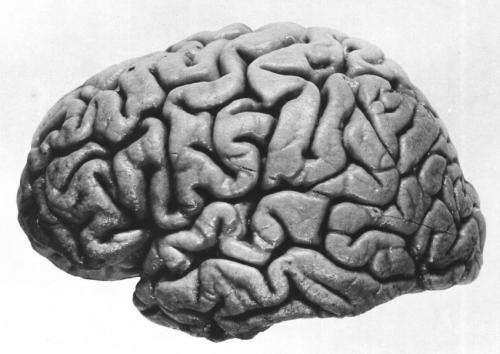New findings on how brain handles tactile sensations

The traditional understanding in neuroscience is that tactile sensations from the skin are only assembled to form a complete experience in the cerebral cortex, the most advanced part of the brain. However, this is challenged by new research findings from Lund University in Sweden that suggest both that other levels in the brain play a greater role than previously thought, and that a larger proportion of the brain's different structures are involved in the perception of touch.
"It was believed that a tactile sensation, such as touching a simple object, only activated a very small part of the cerebral cortex. However, our findings show that a much larger part is probably activated. The assembly of sensations actually starts in the brainstem", said neuroscience researcher Henrik Jörntell at Lund University.
According to his colleague Fredrik Bengtsson, who also participated in the research, this is the first study to show how complex tactile sensations from the skin are coded at the cellular level in the brain.
"Our findings have given us a new key to understanding how the perception of touch in the skin is processed and communicated to the brain", he said.
The Lund researchers have worked in collaboration with researchers in Paris to study how individual nerve cells receive information from the skin. They used a 'haptic interface'*, which created controlled sensations of rolling and slipping movements and of contact initiating and ceasing. Movements proved decisive for the perception of touch – something that was not previously technically possible to study.
The findings of the Swedish-French research group have been published in the distinguished journal Neuron. The work is based on animal experiments and is first and foremost basic research, which aims to increase knowledge of the function of the brain. However, there are also possible areas of application.
"Normal hand and arm prostheses do not give any feedback and therefore no sensation of being a 'real' hand or arm. However, there are new, advanced prostheses with sensors that can supply information to the amputated arm. Our research could contribute to the further development of such sensors", said Henrik Jörntell.
The new findings could also have a bearing on psychiatric illness and brain diseases such as stroke and Parkinson's disease. Detailed knowledge of how the brain and its various parts process information and create a picture of a tactile experience is important to understanding these conditions.
"If we know how a healthy brain operates, we can compare it with the situation in different diseases. Then perhaps we can help patients' brains to function more normally", said Henrik Jörntell.

















